This past week was as laborious as it gets but I had such a great time! I spent my time in the rice fields where I helped with the pulling (harvesting) of rice seedlings, transplanting of the seedlings, and reseeding of rice paddies. Let’s just say it was a week full of sun, sweat, and a whole lot of mud…
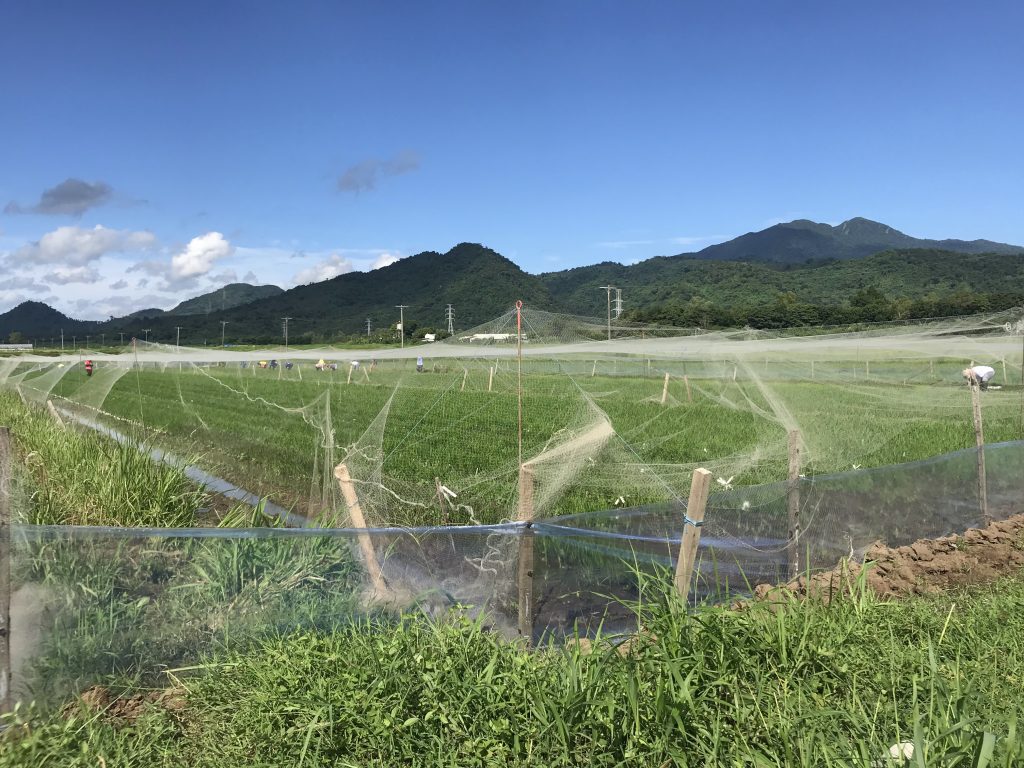
One of the rice fields that I worked in. This rice field is also an example of a dry-bed for initial seedling growth.
On Monday and Tuesday I assisted in the harvesting of 14-day old rice seedlings which involved the careful pulling of seedlings from the soil and the tagging of them with numbered tags which would later correlate with the specific site that the seedlings would need to be transplanted to. The tagged seedlings were grouped into groups of ten and bundled together using elastic bands to make distribution at the transplantation field easier.
At IRRI many of the rice seedlings are initially grown using the ‘dry-bed method’ before being transplanted to bigger fields using the ‘wet-bed method’.
The Dry-Bed Method:
Nurseries are prepared on dry soil with beds that are 50-100cm wide and 5-10cm high. The area is free of shade and is equipped with adequate irrigation to keep the soil moist but not submerged. Right before harvesting, the dry-beds are flooded to make seedlings easier to harvest. Seedlings are usually grown in the dry-beds until they reach 15-21 days of growth, after which they are pulled and transplanted into wet-beds for further growth. The advantage of this method is that seedlings grow to be shorter and stronger, with a longer root system than those from the wet bed nursery although the pulling of the seedlings may lead to damaged roots if not done correctly.
The Wet-Bed Method:
This is the more traditional method of preparing a nursery. It is used in areas where there is sufficient water and land. Wet-beds are often much larger than dry-beds with the biggest difference being that the soil in wet-beds are almost completely submerged under water. The nurseries should be kept free from weeds, pest and disease, and nutrient deficiencies.
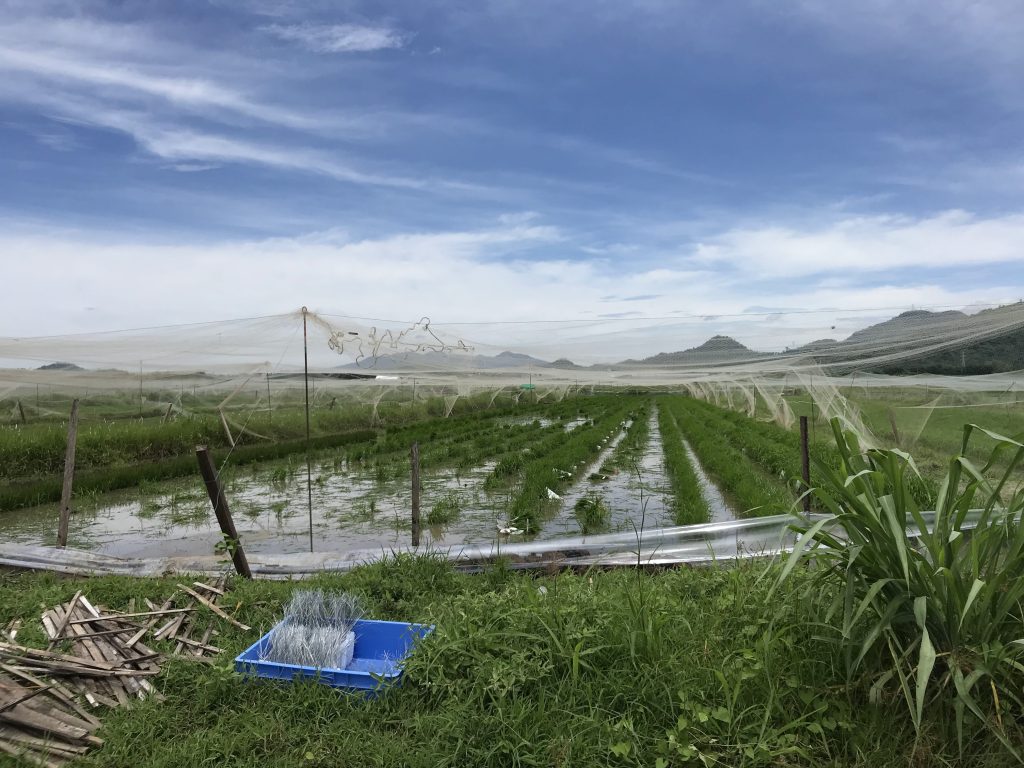
The flooded dry-bed where I harvested the 14 day-old seedlings.

The numbered tags which were secured around each bunch of seedlings.
On Wednesday and Thursday I assisted in the transplanting of the newly harvested seedlings into a wet-bed rice paddy. Each numbered tag on the bundles of seedlings correlated to the numbered tag on a specific pole, indicating where that bundle of seedlings had to be planted.
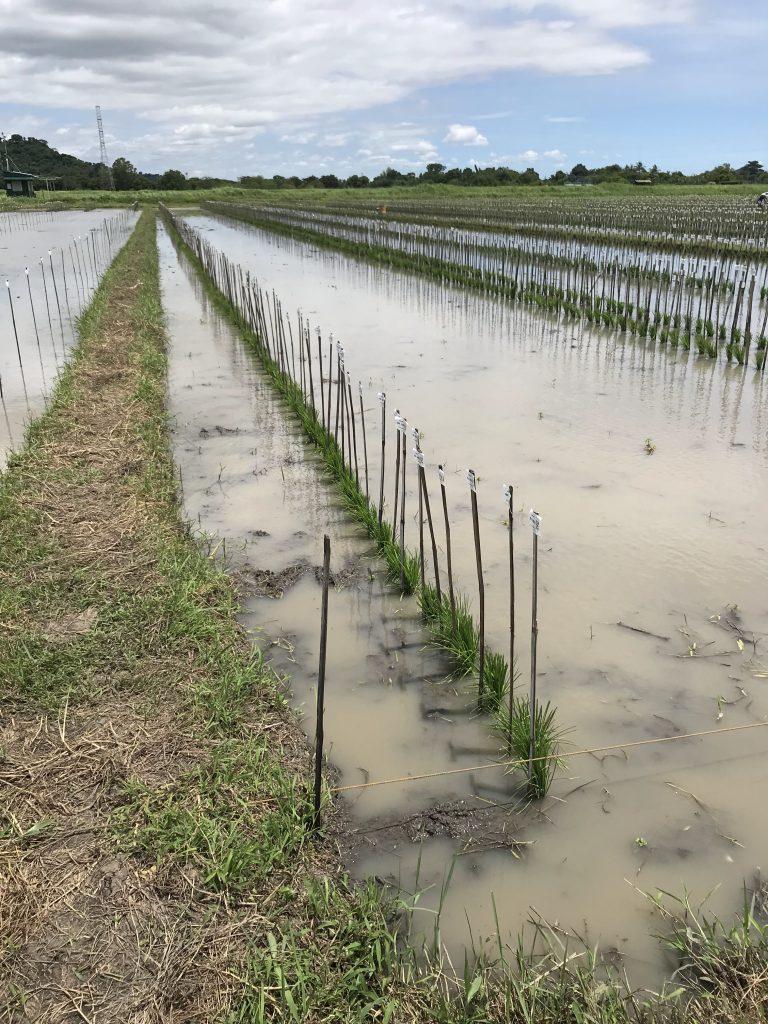
The transplantation field which is also an example of a wet-bed. 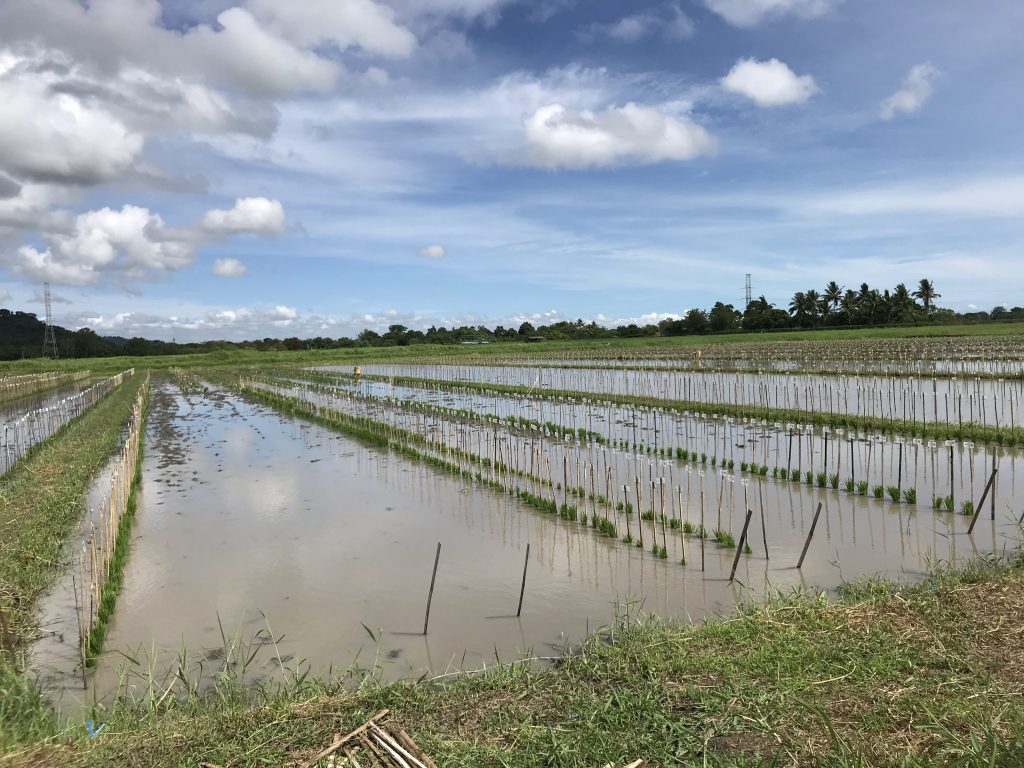
Each pole has a numbered tag which correlates to a tagged bunch of seedlings. The bunch of seedlings will be transplanted at its corresponding pole.
On Friday I got a break from the field and had the opportunity to tour the Seed Processing Unit where I was shown how the rice seeds are inspected, cleaned, dried, undergo germination and moisture tests, and packaged for shipping to other rice plantations around the world.
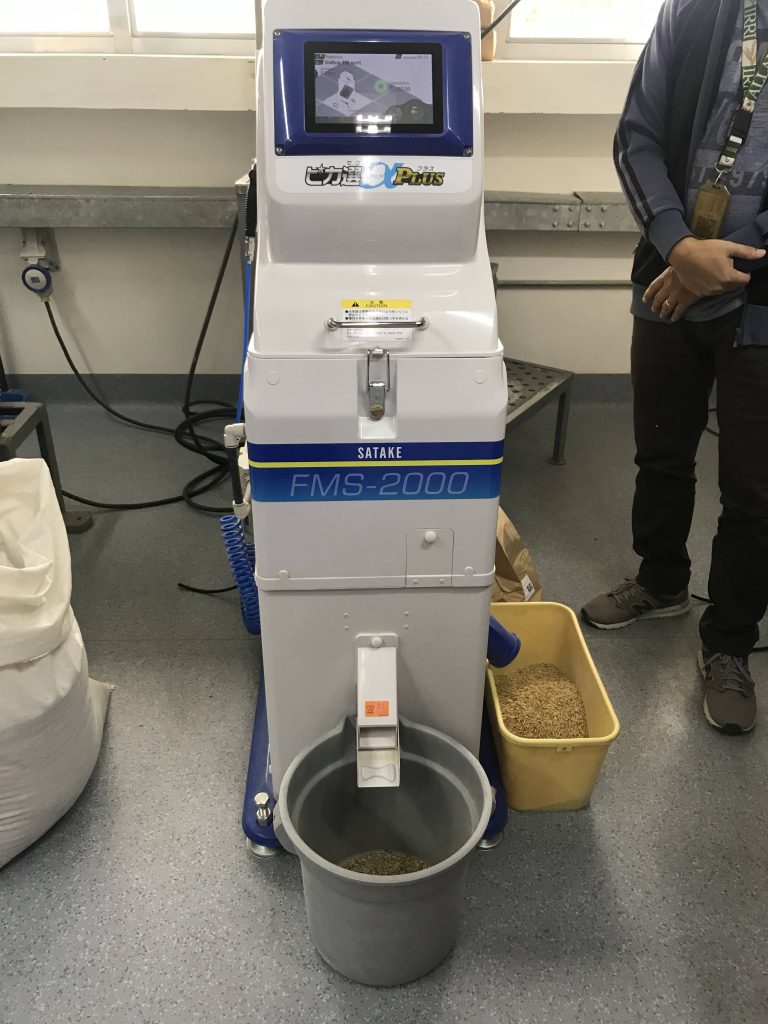
A machine that sorts rice seeds by separating discolored rice seeds. 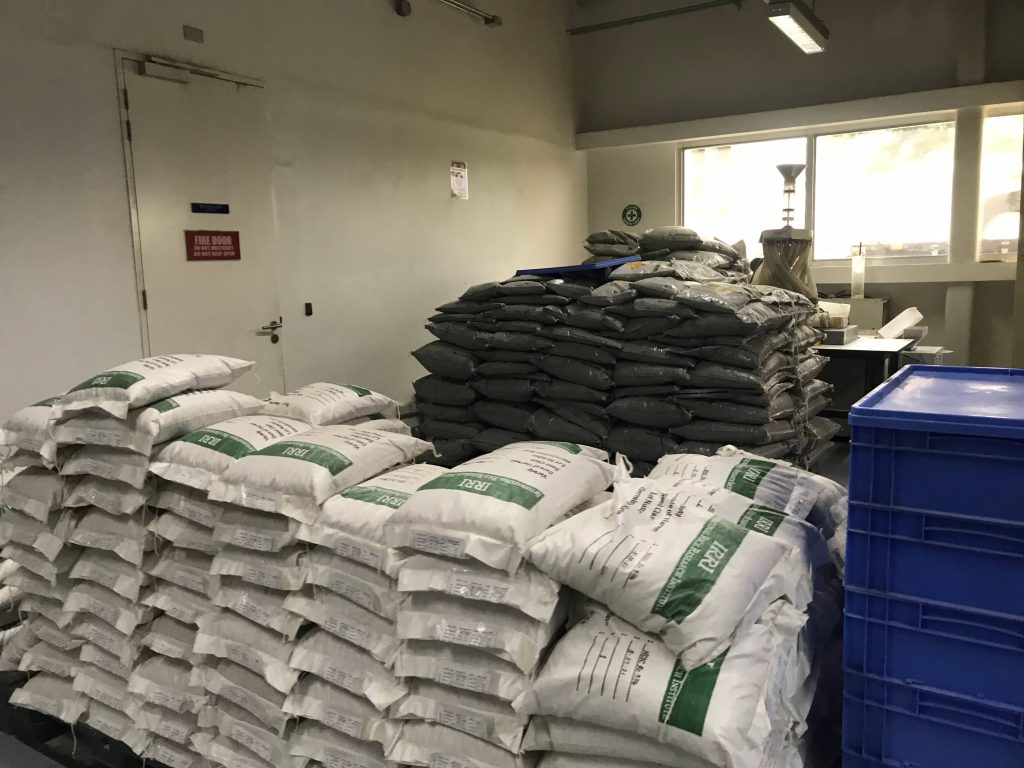

The rice seeds are packaged and shipped to their respective locations around the world.
The following Monday we worked on reseeding an empty dry-bed at the same site that the seedling harvesting took place. We used a direct seeding method in which we manually distributed/poured seeds into each row indented into the dry-beds and covered the seeds in a thin layer of dry soil afterwards.
All of the seedlings that I harvested and transplanted during my week of field work were part of a study on Zinc biofortification. Biofortification is the process of improving the nutritional quality of food crops. This can be achieved through agronomic practices, conventional breeding or biotechnology-based approaches like genetic engineering and genome editing. The seedlings have undergone genetic modifications in an attempt to create varieties of rice that contain higher levels of Zinc. This is a greatly beneficial study owing to the fact that Zinc is one of the most essential micronutrients required for healthy development in humans and more than one billion people suffer from Zinc deficiency related health problems in Asia alone. Because rice is a staple food for Asians as well as other nations, the breeding of rice varieties with high grain Zinc is a necessary operation and this is being done by exploiting several known QTLs and gene specific markers that have been identified for grain Zn and using use them in Marker-Assisted Breeding.
The past week was a great example of science in action and I have a new appreciation for the amount of work and effort that goes on ‘behind-the-scenes’.
“If you give me rice, I’ll eat today; if you teach me how to grow rice, I’ll eat every day.”
— Mahatma Gandhi



One response to “Call Me Farmer Katy!”